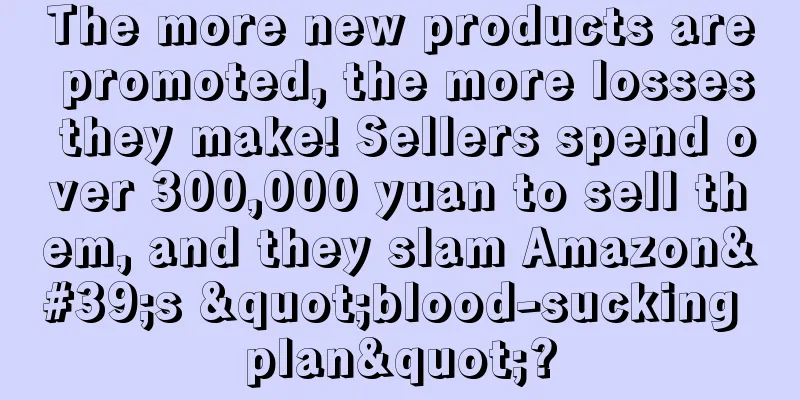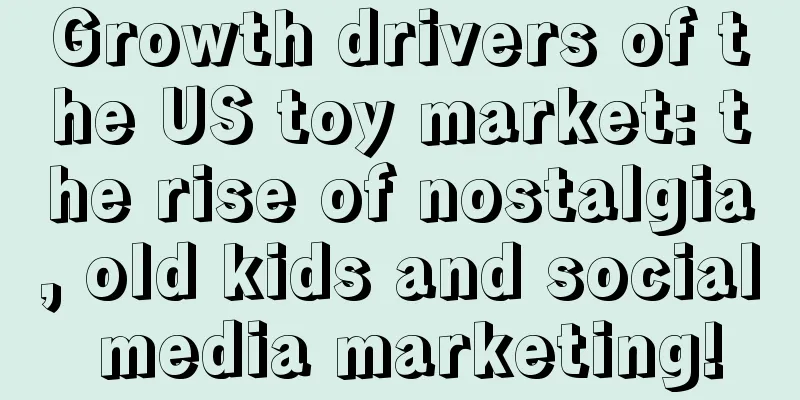|
▶ Video account attention cross-border navigation As the peak season approaches, cross-border sellers are actively preparing for the new season with new products. Looking back at the first quarter, this year's off-season seems to be more sluggish than in the past, with overall category traffic decline and a slump in orders becoming the norm in recent months.
Especially since the account blocking wave broke out last year, Amazon has cracked down on violations and regulated more and more sellers to move closer to white hat operations, focusing on advertising investment and joining official support programs. However, at the same time, the disadvantage of increasingly expensive traffic costs has become increasingly prominent, and some sellers have reported that they have spent a lot of money but have not received corresponding returns. The return on traffic investment is not proportional, is Amazon's accelerator program questioned? It is learned that Amazon launched the Brand Accelerator Program in 2018. Sellers who join the project can not only have a dedicated manager's 1-on-1 service, but also enjoy various types of traffic support. However, a Japanese seller recently called the Amazon Accelerator Program a "blood-sucking program" and said that the traffic feedback and capital investment are not proportional at all. ▲ The picture comes from Zhiwubuyan It is reported that the plan stipulates that the entire store will be charged a 7% commission every month, totaling about 30,000 yuan. In addition, the seller spent 20,000 yuan to complete the required BSCI plan. The seller said that his store made a profit of about 100,000 yuan a month. However, after joining the accelerator program for half a year, the traffic feedback was very little, bringing in only 4,500 traffic a month. If converted based on advertising CPC, it is only worth 5,500 yuan. Overall, the seller invested more than 300,000 yuan, but the traffic he obtained was far less than expected, which can be said to be a loss-making business. One of his colleagues who joined the program in Europe had even worse traffic and could not even report DOTD. However, what made the seller even more angry was that when he applied to the manager to withdraw from the program, he was rejected. The other party said that according to the new policy launched this year, buyers who have joined the accelerator program for less than one calendar year cannot withdraw, and the withdrawal process needs to go through layers of approval, and there is a high probability that it will not be approved. ▲ The picture comes from the seller communication group Many sellers echoed this: "We withdrew before the charges were made because during the trial we felt that other than being able to report to DOTD, other traffic did not increase." "Dozens of orders a day are from advertisements. Naturally, there aren't many orders, but there's still a 7% commission." "There is also competition among accelerator sellers, and the display is unstable and advertising is not allowed." However, many sellers have benefited from the accelerator program. A European seller said that he can apply for DOTD once a month for free, and he can also submit an application if he forgets the activity and does not recommend it. In addition, he can hang it on the page of the competitor's benchmark ASIN, and get the same order weight as the benchmark product in the first month. There is also a seller on the US site who joined brand acceleration half a year ago and his sales took off, from 10 orders a day to 200 orders a day now. Basically all the keywords are in the first place. Even if the unit price of the product is increased by US$10, the ranking is still high. Judging from the feedback from sellers, the accelerator program is icing on the cake rather than a timely help. It is difficult for new store listings to highlight their advantages after they are added with immature listings. However, if the listings of old stores with relatively high advertising costs are added, it will help to break through the traffic bottleneck. Overall, sellers still need to decide whether to join based on their own stores. After all, the 7% commission fee for this service is a considerable cost. The more new products are launched, the more losses they suffer, and the cost of traffic is becoming increasingly valuable? Since the account ban wave last year, the transformation to white hat operations seems to be the general trend. However, white hat operations may not only face the risk of malicious competition and low review rates, but also need to bear high promotion costs. Under this circumstance, it is becoming increasingly difficult to promote new products, which has become a common pain point for many sellers. Recently, a seller asked for help on the forum. His product had been on the shelves for more than half a year but was losing more and more money the more he promoted it. The advertising was poor and the natural traffic was getting lower and lower. ▲ The picture comes from Zhiwubuyan According to him, the product has been promoted through advertising since the end of February, with an average daily advertising cost of about $100. In addition, other means such as flash sales and off-site promotions have also been tried, but with little effect. Judging from the product traffic trends shared by the seller, the conversion rate and ranking have continued to decline. Today's loss is about 80 US dollars, and the total loss in March and April is about 8,000 US dollars. Another seller reported that the advertising effect of his products has been declining in recent times. Under the same bidding, the exposure has been significantly reduced, and the order conversion rate has also dropped a lot. It can be seen that under the white hat operation environment, sellers face many challenges in product promotion. On the one hand, there is a fierce battle for traffic, and on the other hand, there are rising traffic costs. Nowadays, it is very risky to get a high position in natural search by fake orders and reviews, so advertising has become the only controllable means for sellers to occupy search traffic. However, the price of Amazon advertising has continued to soar in recent years, with the average cost per click increasing from 14 cents in 2014 to $1.6 now. Previously, SimpleModern, a top seller on Amazon, spent more than $10 million on Amazon advertising in recent years, but last month it reduced its budget to zero and violently shut down Amazon advertising. Under this circumstance, more and more sellers are turning their attention to off-site promotion, using social media such as TikTok and Facebook to drive traffic to their products. Do you have any thoughts on the current Amazon product promotion strategy? Feel free to leave a comment in the comment section~
|










